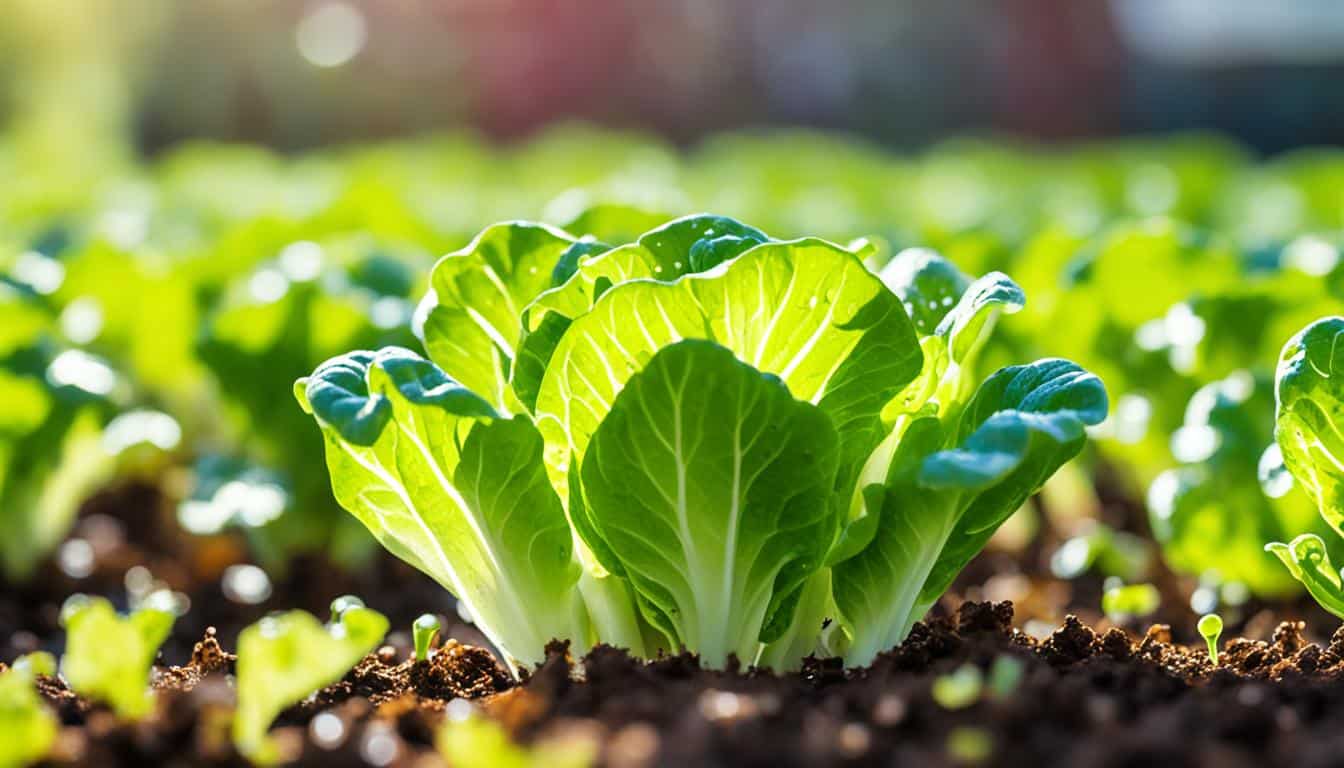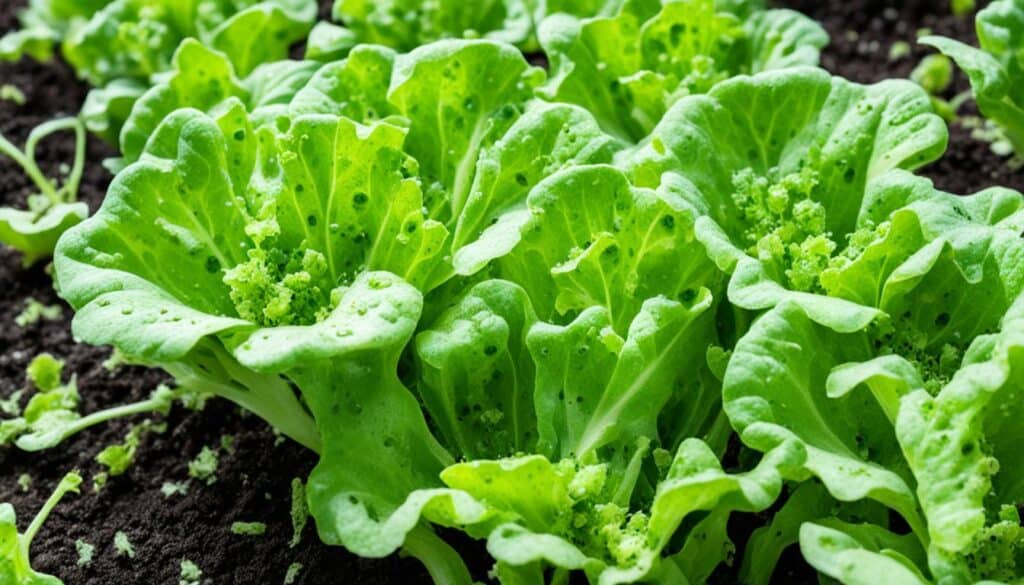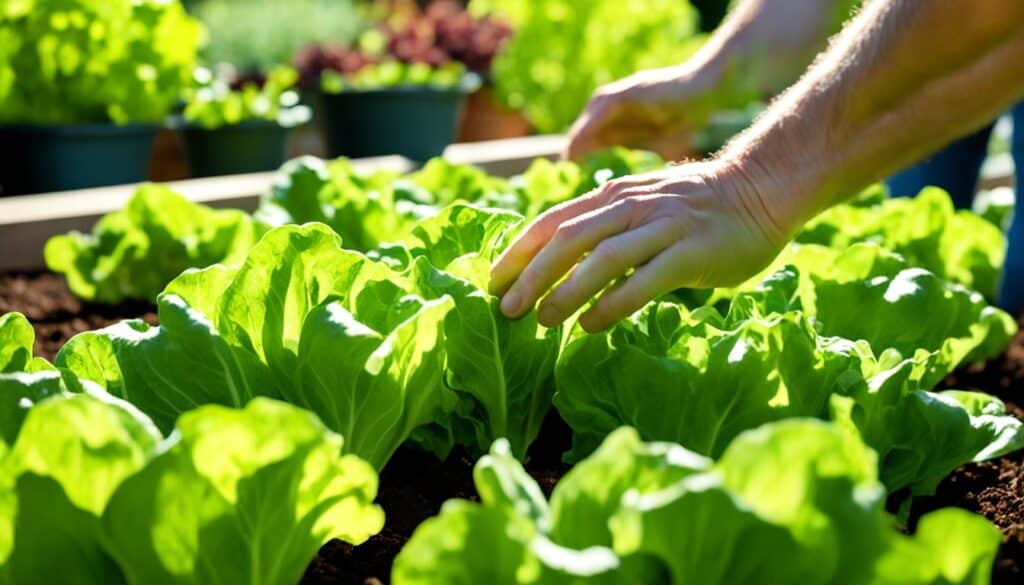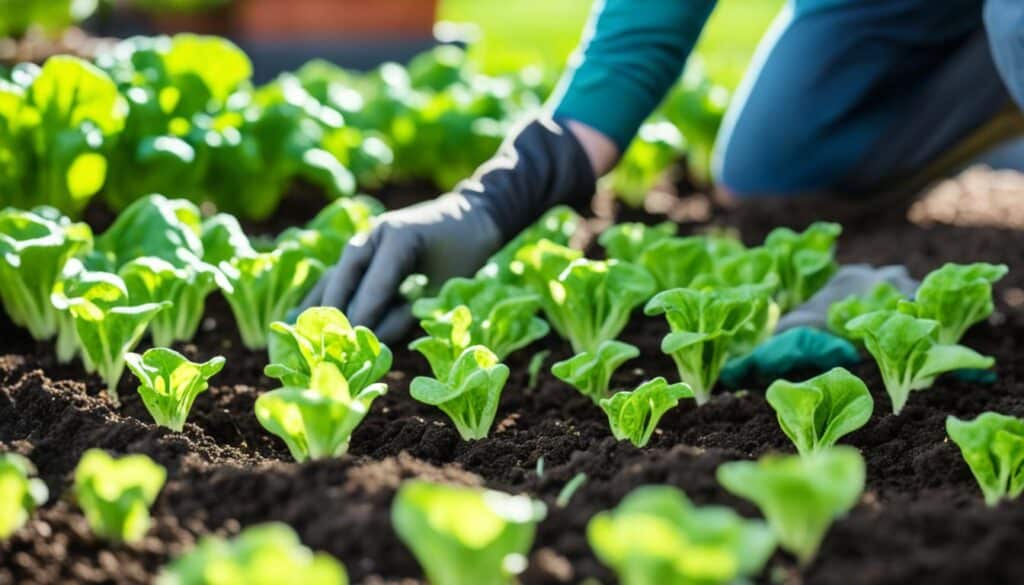When it comes to green leafy vegetables, buttercrunch lettuce stands out as a favorite among salad enthusiasts. With its crispy texture, mild flavor, and velvety leaves, it’s no wonder this variety has become a staple in homes and restaurants alike. Whether you’re a fan of homegrown produce or looking for a healthy salad option, buttercrunch lettuce is a delicious choice.
Buttercrunch lettuce belongs to the “butterheads” family of lettuce, which includes other popular varieties like ‘Boston’ and ‘Bibb.’ Unlike its counterparts, buttercrunch lettuce offers a softer bite and a milder taste, making it perfect for those who prefer a more delicate flavor.
Not only is buttercrunch lettuce a delight to the taste buds, but it also provides a wealth of nutritional benefits. Loaded with vitamins, minerals, and antioxidants, this leafy green is a powerhouse of nutrients that can support overall health and well-being.
So, whether you’re starting your journey into gardening or looking to elevate your salad game, join me as I share my top tips for growing buttercrunch lettuce and enjoying the freshest, most delicious salads straight from your own backyard!
Key Takeaways:
- Buttercrunch lettuce is a fresh, tender, and nutritious salad green.
- It belongs to the lettuce family known as “butterheads.”
- Buttercrunch lettuce has a crisp texture, mild flavor, and velvety leaves.
- It provides a wealth of vitamins, minerals, and antioxidants.
- Whether you’re a beginner or a seasoned gardener, growing buttercrunch lettuce can add a fresh and healthy touch to your meals.
Cultivation and History
The cultivation of lettuce can be traced back to the Middle East, where the first lettuce plants were bred from wild specimens. The Egyptians were the first civilization to use lettuce for food, oil, and medicine, and they cross-bred plants to develop sweeter varieties. The Romans learned to cultivate lettuce from the Egyptians, and lettuce became a common part of their diet.
Over time, different lettuce varieties were developed in Europe and Asia, eventually reaching the American colonies. Butterhead lettuces like ‘Boston’ and ‘Bibb’ have loose, soft heads that can be harvested as individual leaves. Buttercrunch lettuce, a variety developed by George Raleigh at Cornell University, has been a popular lettuce since the 1960s due to its soft, buttery texture. Lettuce heads can be left to bolt and produce seeds for future crops.
| Lettuce Variety | Characteristics |
|---|---|
| ‘Boston’ Lettuce | Loose, soft head, mild flavor |
| ‘Bibb’ Lettuce | Loose, soft head, tender leaves |
| Buttercrunch Lettuce | Soft, buttery texture, mild flavor |
George Raleigh’s work in lettuce breeding and propagation has contributed to the popularity of buttercrunch lettuce. Today, lettuce cultivation continues to thrive with various varieties available for home gardeners and commercial growers alike.
How to Grow Buttercrunch Lettuce
Buttercrunch lettuce is a versatile and delightful salad green that can be easily grown in your own garden. Whether you have limited space or prefer indoor gardening, there are various methods for growing buttercrunch lettuce. Let’s explore the step-by-step process of growing this delicious variety.
Starting from Seeds or Transplanting?
When growing buttercrunch lettuce, you have the option of starting from seeds or transplanting young seedlings. Starting from seeds allows you to control the entire growth process and ensures the freshness of your homegrown lettuce. To start from seeds, choose a nutrient-dense potting mix and sow the seeds to a shallow depth, covering them lightly with soil. It’s best to start the seeds indoors a few weeks before the last frost for your area. This allows the seedlings to establish a strong root system before being transplanted outdoors.
On the other hand, if you prefer a faster start or have limited indoor space, you can opt to transplant young seedlings. These can be purchased from nurseries or grown in separate containers until they reach a suitable size for transplanting. When transplanting, gently remove the seedlings from their containers, ensuring that the root ails remain intact, and place them in a prepared garden bed or container.
Choosing the Right Growing Method
Buttercrunch lettuce can be successfully grown in various gardening methods, including traditional planting, container gardening, aquaponics, and hydroponics. Traditional planting in fertile garden soil provides the lettuce with the necessary nutrients and allows it to establish a deep root system. Container gardening is a great alternative for those with limited space or who want the convenience of movable planters. Aquaponic and hydroponic systems can provide a controlled environment for the plants, with nutrient-rich water supplying them with all the essential elements they need to thrive.
Light and Water Requirements
Buttercrunch lettuce thrives in full sun conditions but can tolerate partial shade. Ensure that your planting location receives at least 6 hours of direct sunlight daily. In hot climates, providing some afternoon shade can prevent the lettuce from bolting or becoming bitter.
Watering is another crucial aspect of lettuce care. Keep the soil consistently moist but not waterlogged to prevent root rot. Water deeply, allowing the moisture to penetrate the soil and reach the root zone. Applying a layer of mulch around the base of the plants can help retain soil moisture, suppress weed growth, and regulate soil temperature.
Caring for Buttercrunch Lettuce
In addition to providing adequate light and water, there are a few other essential care tips for growing buttercrunch lettuce:
- Ensure the soil is well-draining and rich in organic matter.
- Fertilize sparingly, as buttercrunch lettuce is not a heavy feeder. Use a balanced organic fertilizer or compost to supply adequate nutrients.
- Monitor the plants for pests and diseases, such as aphids or powdery mildew, and take appropriate measures if necessary.
- To protect the plants from extreme temperatures, consider using shade cloths during hot summers or row covers during frosty winters.
Harvesting Buttercrunch Lettuce
Buttercrunch lettuce can be harvested when the leaves reach their desired size and texture. To harvest individual leaves, simply pinch them off at the base, leaving the rest of the plant to continue growing. If you prefer to harvest the whole head, use a clean knife or shears to cut the lettuce just above the soil level. Remember to harvest in the morning when the leaves are crisp and fresh.
Once harvested, rinse the lettuce leaves thoroughly in cold water to remove any dirt or debris. Gently pat them dry with a clean towel or a salad spinner before using or storing. It’s best to use the lettuce within a week for optimal flavor and crispness.
Quick Reference Guide for Growing Buttercrunch Lettuce
Here’s a handy reference guide summarizing the key steps for growing buttercrunch lettuce:
| Step | Description |
|---|---|
| 1 | Choose the desired growing method: starting from seeds or transplanting seedlings. |
| 2 | Select a suitable planting location with full sun exposure or partial shade. |
| 3 | Ensure the soil is well-draining, fertile, and rich in organic matter. |
| 4 | Water the lettuce consistently, keeping the soil moist but not waterlogged. |
| 5 | Apply a layer of mulch to retain soil moisture and suppress weed growth. |
| 6 | Fertilize sparingly using organic options or a balanced fertilizer. |
| 7 | Protect the plants from extreme temperatures, sunburn, or frost using appropriate covers or shade cloths. |
| 8 | Harvest the lettuce by either picking individual leaves or cutting the whole head at the base. |
Following these guidelines will help you grow healthy and delicious buttercrunch lettuce in your garden or indoor setup. Enjoy the satisfaction of growing your own fresh greens!
Growing Tips for Buttercrunch Lettuce
When it comes to growing buttercrunch lettuce, there are several essential tips to keep in mind. From soil preparation to protection from the elements, these guidelines will help ensure a successful harvest of this delicious and nutritious salad green.
Soil Preparation
Preparing the soil is a crucial step in growing buttercrunch lettuce. Start by adding compost or aged manure to enhance the nutrient content of the soil. This will provide the lettuce plants with the necessary nutrients for healthy growth. Ensure that the soil is well-drained to prevent waterlogging, as buttercrunch lettuce prefers moist but not overly wet conditions. Loosening the soil before planting will also promote better root development and allow for easy absorption of nutrients.
Watering
Consistent watering is essential for buttercrunch lettuce, as it requires moist soil to thrive. However, overwatering can lead to rotting and other issues. Water the plants regularly, making sure to keep the soil evenly moist. One way to achieve this is by applying water at the base of the plants, rather than using overhead sprinklers. This minimizes the risk of wetting the leaves excessively, which can promote diseases. Regularly monitor the soil moisture to prevent both under and overwatering.
Mulching
Mulching is an effective technique to retain soil moisture and suppress weeds in the garden. When mulching buttercrunch lettuce, use materials like straw, shredded leaves, or grass clippings. Apply a thin layer of mulch around the plants, ensuring that it does not come in contact with the lower leaves. This prevents moisture from being trapped against the leaves, which can lead to fungal diseases. Mulching also helps to regulate soil temperature, keeping it cooler during hot summer days.
Fertilizing
Buttercrunch lettuce generally does not require heavy fertilization if the soil is already nutrient-rich. However, if desired, light fertilization can be beneficial. Use low-nitrogen fertilizers or organic options like fish emulsion. Apply fertilizers sparingly, following the manufacturer’s instructions, as excessive fertilization can result in reduced leaf quality and increased susceptibility to pests and diseases.
Protection from Heat and Cold
Buttercrunch lettuce performs best in mild temperatures but can handle some extremes with proper protection. To shield the plants from excessive heat and sun damage, use shade cloth or row covers. Planting the lettuce near taller plants that provide shade during the hottest parts of the day is also beneficial. In colder climates, consider using cold frames or row covers to protect the plants from freezing temperatures. These measures will help extend the growing season and ensure a bountiful harvest.
Where to Buy Buttercrunch Lettuce
If you’re ready to start your journey of growing buttercrunch lettuce, you’ll need to find a reliable source for purchasing high-quality seeds. Luckily, there are several reputable lettuce seed suppliers that offer a wide selection of organic lettuce seeds, including buttercrunch lettuce.
Recommended Lettuce Seed Suppliers
- Johnny’s Selected Seeds: https://www.johnnyseeds.com/
- Burpee: https://www.burpee.com/
- Seed Savers Exchange: https://www.seedsavers.org/
These reputable suppliers have a longstanding history of providing high-quality seeds to gardeners, ensuring that you’ll have the best chance of successfully growing organic buttercrunch lettuce. When purchasing your seeds, be sure to check the packaging for specific instructions on planting and growing buttercrunch lettuce.
- Tip: When buying seeds, opt for organic options whenever possible. Organic lettuce seeds are grown without the use of synthetic pesticides or fertilizers, making them a healthier and more sustainable choice for your garden.
- Fun Fact: By purchasing seeds from reputable suppliers, you’ll not only have access to a wide variety of lettuce seeds but also benefit from the expertise and guidance provided by these trusted sources.
Managing Pests and Disease
Like any vegetable, buttercrunch lettuce is susceptible to pests and diseases. It’s important to be proactive in managing these issues to ensure a healthy and bountiful harvest. Here are some common pests and diseases that can affect buttercrunch lettuce:
Pests:
- Aphids
- Cutworms
- Earwigs
- Whiteflies
- Slugs
- Snails
These pests can cause damage to the leaves and stems of your lettuce plants, affecting their overall health and productivity.
Diseases:
- Lettuce Mosaic Virus
- Powdery Mildew
- White Mold
These diseases can spread quickly and lead to wilting, discoloration, and fungal growth on the lettuce plants.
Fortunately, there are several strategies you can employ to manage pests and diseases in your buttercrunch lettuce crop:
- Regularly inspect your plants for signs of pests and diseases.
- Remove any affected plants immediately to prevent further spread.
- Consider using insecticidal soaps or organic pest control methods to manage pests.
- Implement cultural practices like crop rotation and proper spacing to reduce disease incidence.
- Provide adequate air circulation and avoid overcrowding to discourage disease development.
- Maintain good garden hygiene by removing debris and fallen leaves that can harbor pests and pathogens.
- Consider using row covers to protect young lettuce plants from pest infestation.
By being vigilant and taking appropriate measures, you can minimize the impact of pests and diseases on your buttercrunch lettuce crop and enjoy a successful harvest.
Harvesting Buttercrunch Lettuce
Now that your buttercrunch lettuce has reached maturity, it’s time to enjoy the fruits of your labor by harvesting it. There are two main methods for harvesting buttercrunch lettuce: harvesting individual leaves and harvesting the entire head.
Harvesting Individual Leaves
One way to harvest buttercrunch lettuce is by picking individual leaves as you need them. Start by selecting the outer leaves of the plant, leaving the inner ones to continue growing. To harvest a leaf, gently hold it near the base and use a pair of scissors or a sharp knife to cut it off. Be careful not to damage the rest of the plant during this process. By harvesting only the outer leaves, you allow the inner leaves to develop and ensure a continuous supply of fresh lettuce throughout the growing season.
Harvesting Entire Heads
If you prefer to harvest the entire head of buttercrunch lettuce, wait until it has reached full maturity. To harvest the head, simply cut the plant at the base, about an inch above the soil level. Make sure to use a sharp knife or pair of shears to create a clean cut. Harvesting entire heads is a great option if you plan to harvest a larger quantity of lettuce all at once, such as for a salad or to share with friends and neighbors.
Whatever method you choose, it’s best to harvest buttercrunch lettuce in the morning, preferably before the sun has had a chance to heat up the leaves. This ensures the leaves are crisp and firm, maximizing their taste and texture.
After harvesting, it’s important to wash the lettuce thoroughly to remove any dirt or debris. Gently rinse the leaves under cool running water and pat them dry with a clean towel or paper towel. Once dry, store the lettuce in a resealable plastic bag or an airtight container in the refrigerator. It’s recommended to use the lettuce within a week of harvesting to maintain its freshness and flavor.
Buttercrunch Lettuce Harvesting Techniques
| Harvesting Technique | Description |
|---|---|
| Harvesting Individual Leaves | Pick outer leaves as needed, leaving inner leaves to grow |
| Harvesting Entire Heads | Cut the plant at the base to remove the entire head |
By following these harvesting techniques, you can enjoy the fresh taste of buttercrunch lettuce straight from your garden. Whether you prefer to pick individual leaves or harvest entire heads, the choice is yours. Just remember to harvest in the morning, wash and dry the lettuce thoroughly, and store it properly to maintain its quality.
Recipes and Cooking Ideas with Buttercrunch Lettuce
Buttercrunch lettuce is a versatile ingredient that can be used in a variety of recipes. Its mild flavor and crisp texture make it the perfect choice for salads, wraps, and sandwiches. Whether you’re looking to enhance your salad game or try out new healthy meal ideas, buttercrunch lettuce has got you covered.
Salad Recipes
When it comes to salads, buttercrunch lettuce shines as both the main ingredient and a bed for other delicious toppings. Its delicate leaves provide a refreshing crunch, while its mild flavor allows other flavors to shine. Here are a few salad recipes that showcase the versatility of buttercrunch lettuce:
- Classic Caesar Salad with Buttercrunch Lettuce
- Strawberry Spinach Salad with Buttercrunch Lettuce
- Buttercrunch Lettuce and Avocado Salad
Lettuce Wraps
If you’re looking for a lighter alternative to traditional sandwiches, lettuce wraps are a fantastic option. Buttercrunch lettuce leaves make the perfect wrap for delicious fillings, providing a satisfying crunch and an extra dose of nutrition. Here are a few lettuce wrap ideas to get you started:
- Asian Chicken Lettuce Wraps
- Taco Lettuce Wraps with Spicy Beef
- Vegetarian Lettuce Wraps with Tofu and Veggies
Lettuce Sandwiches
Lettuce sandwiches are a healthy and refreshing alternative to traditional bread-based sandwiches. Buttercrunch lettuce leaves act as a crisp and nutritious replacement for bread, adding an extra layer of freshness to your sandwich. Here are a few lettuce sandwich ideas to try:
- Grilled Chicken and Avocado Lettuce Sandwich
- BLT Lettuce Sandwich with Crispy Bacon
- Vegan Lettuce Wraps with Hummus and Veggies
These are just a few examples of the many ways you can incorporate buttercrunch lettuce into your meals. The possibilities are endless, so feel free to get creative and experiment with different flavors and ingredients.
Quick Reference Growing Guide for Buttercrunch Lettuce
To assist with growing buttercrunch lettuce, here is a quick reference guide:
- Choose a location: Select a spot that receives full sun to partial shade for optimal growth.
- Planting dates: Start seeds indoors a few weeks before the last frost or sow directly into the garden after the threat of frost has passed.
- Spacing: Space plants 10-12 inches apart to allow for adequate air circulation and healthy growth.
- Growing season: Buttercrunch lettuce thrives in cooler temperatures, making it suitable for spring and fall growing seasons.
- Watering guide: Consistently water the soil to keep it moist but not overly wet, as excessive moisture can cause root rot.
- Mulching: Apply a light layer of mulch around the plants to retain soil moisture, but make sure it doesn’t come into direct contact with the lower leaves to prevent rotting.
- Fertilizing: Use low-nitrogen fertilizers or organic options sparingly, as buttercrunch lettuce doesn’t require heavy feeding.
- Protection from heat: Shield the plants from excessive heat and sun exposure by using shade cloth or planting taller companion plants nearby to provide shade.
- Harvesting: Harvest individual leaves as needed or the entire head when mature. Morning harvest is best to maintain freshness.
- Storage: After harvesting, wash and dry the lettuce thoroughly and store it in the refrigerator. Consume within a week for the best flavor.
Conclusion
Buttercrunch lettuce is a delightful and nutritious salad green that can be easily grown in home gardens. Its tender leaves and mild flavor make it a favorite among lettuce lovers. By following the tips and guidelines provided in this article, you can successfully cultivate buttercrunch lettuce and enjoy a bountiful harvest of this delicious and healthy salad green. Whether you’re a beginner gardener or a seasoned pro, growing buttercrunch lettuce is a rewarding experience that will add fresh and nutritious greens to your meals.










Leave a Reply